Nuclear imaging of the breast: translating achievements in instrumentation into clinical use
- PMID: 23635248
- PMCID: PMC3656956
- DOI: 10.1118/1.4802733
Nuclear imaging of the breast: translating achievements in instrumentation into clinical use
Abstract
Approaches to imaging the breast with nuclear medicine and∕or molecular imaging methods have been under investigation since the late 1980s when a technique called scintimammography was first introduced. This review charts the progress of nuclear imaging of the breast over the last 20 years, covering the development of newer techniques such as breast specific gamma imaging, molecular breast imaging, and positron emission mammography. Key issues critical to the adoption of these technologies in the clinical environment are discussed, including the current status of clinical studies, the efforts at reducing the radiation dose from procedures associated with these technologies, and the relevant radiopharmaceuticals that are available or under development. The necessary steps required to move these technologies from bench to bedside are also discussed.
Figures
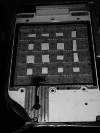

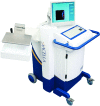

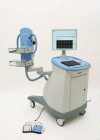

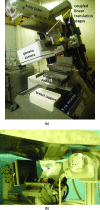

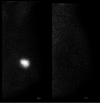
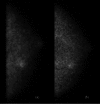

Similar articles
-
Breast imaging devices for nuclear medicine.J Nucl Med Technol. 2012 Jun;40(2):71-8. doi: 10.2967/jnmt.111.097410. Epub 2012 May 4. J Nucl Med Technol. 2012. PMID: 22562462 Review.
-
Introduction and Overview.J Nucl Med. 2016 Feb;57 Suppl 1:1S-2S. doi: 10.2967/jnumed.115.157818. J Nucl Med. 2016. PMID: 26834097 No abstract available.
-
Current research in nuclear medicine and molecular imaging: highlights of the 23rd Annual EANM Congress.Eur J Nucl Med Mol Imaging. 2011 Feb;38(2):378-99. doi: 10.1007/s00259-010-1698-4. Epub 2011 Jan 4. Eur J Nucl Med Mol Imaging. 2011. PMID: 21203754
-
A molecular approach to breast imaging.J Nucl Med. 2014 Feb;55(2):177-80. doi: 10.2967/jnumed.113.126102. Epub 2014 Jan 16. J Nucl Med. 2014. PMID: 24434288 Review.
-
Impact of the diagnostic methods on the therapeutic strategies.Q J Nucl Med. 1998 Mar;42(1):66-80. Q J Nucl Med. 1998. PMID: 9646647 Review.
Cited by
-
Current Concepts in Molecular Breast Imaging.J Breast Imaging. 2025 Jan 25;7(1):104-118. doi: 10.1093/jbi/wbae076. J Breast Imaging. 2025. PMID: 39692400 Review.
-
A hardware investigation of robotic SPECT for functional and molecular imaging onboard radiation therapy systems.Med Phys. 2014 Nov;41(11):112504. doi: 10.1118/1.4898121. Med Phys. 2014. PMID: 25370663 Free PMC article.
-
Thyroid scintigraphy of healthy cats using small-field-of-view gamma cameras.Front Vet Sci. 2024 Oct 21;11:1453441. doi: 10.3389/fvets.2024.1453441. eCollection 2024. Front Vet Sci. 2024. PMID: 39497744 Free PMC article.
-
Dedicated Breast Gamma Camera Imaging and Breast PET: Current Status and Future Directions.PET Clin. 2018 Jul;13(3):363-381. doi: 10.1016/j.cpet.2018.02.008. PET Clin. 2018. PMID: 30100076 Free PMC article. Review.
-
Non-rigid registration of serial dedicated breast CT, longitudinal dedicated breast CT and PET/CT images using the diffeomorphic demons method.Phys Med. 2014 Sep;30(6):713-7. doi: 10.1016/j.ejmp.2014.06.040. Epub 2014 Jul 9. Phys Med. 2014. PMID: 25022452 Free PMC article.
References
-
- Berg W. A., Madsen K. S., Schilling K., Tartar M., Pisano E. D., Larsen L. H., Narayanan D., Ozonoff A., Miller J. P., and Kalinyak J. E., “Breast cancer: Comparative effectiveness of positron emission mammo- graphy and MR imaging in presurgical planning for the ipsilateral breast,” Radiology 258, 59–72 (2011).10.1148/radiol.10100454 - DOI - PMC - PubMed
-
- Berg W. A., Madsen K. S., Schilling K., Tartar M., Pisano E. D., Larsen L. H., Narayanan D., and Kalinyak J. E., “Comparative effectiveness of positron emission mammography and MRI in the contralateral breast of women with newly diagnosed breast cancer,” AJR, Am. J. Roentgenol. 198, 219–232 (2012).10.2214/AJR.10.6342 - DOI - PubMed
Publication types
MeSH terms
Grants and funding
LinkOut - more resources
Full Text Sources
Other Literature Sources
Medical

